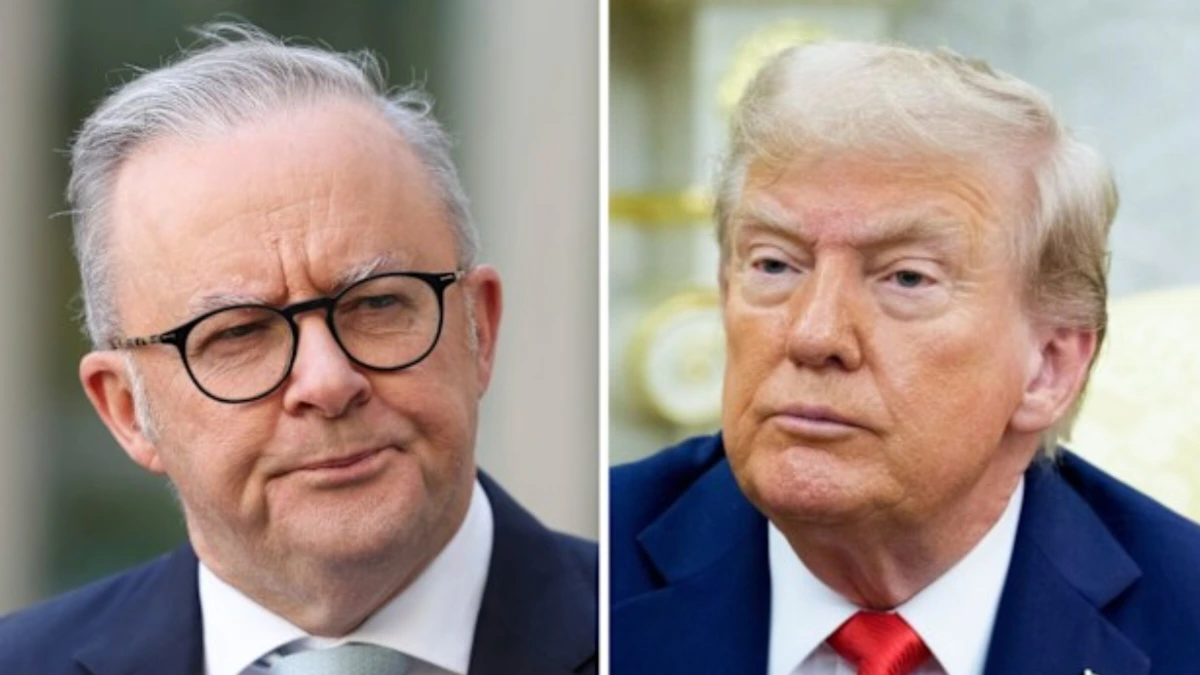WASHINGTON — A new US & Australia agreement on critical minerals backed by President Donald Trump is being hailed as a significant boost for Western mining ambitions, but analysts warn that it will take years to loosen China’s stranglehold over the global rare earth supply chain.
Announced Monday, the deal commits $3 billion in joint funding to mining and processing projects, along with a proposed price floor for critical minerals a move long sought by Western producers.
The White House said US investment could unlock Australian deposits worth more than $53 billion, although details on project timelines and sites remain limited.
Critical minerals such as lithium, nickel, cobalt, and rare earth elements are essential components in clean energy, defense, and high tech manufacturing.
China currently dominates every major step of the supply chain from mining and refining to magnet production controlling around 90 percent of global refining capacity and nearly all magnet manufacturing.
Trump framed the agreement as part of a broader effort to reduce reliance on China. “In a year, we’ll have so much critical mineral and rare earths that you won’t know what to do with them,” he told reporters. “They’ll be worth about two dollars.”
The initiative reflects Washington’s growing concerns over China’s control of strategic materials, which has raised alarm across Western capitals.
Beijing’s recent export restrictions on rare earths and magnets have added new urgency to diversification efforts, particularly after prices for neodymium praseodymium oxide surged 40 percent in August.
Australia, home to some of the world’s largest reserves of lithium and rare earths, has long sought deeper cooperation with the United States to develop processing capabilities that could bypass China.
The new framework expands earlier memorandums on supply chain resilience and adds financing support through state backed institutions.
Mining analysts and policy experts welcomed the investment but questioned the speed of Trump’s proposed timeline.
“The time frame for projects to be ready even by 2027 would be heroic,” said Dan Morgan, an analyst with Barrenjoey Capital in Sydney. “Nothing in the rare earths industry happens quickly.
Building mines and processing plants is a five to seven year journey at best.” Dylan Kelly, head analyst at Terra Capital, echoed that sentiment.
“It’s positive that governments are stepping in, but expecting supply growth within a year is unrealistic,” he said. “Western developers need a stable price floor to make new projects viable.”
Industry observers note that refining rare earths is technically complex and environmentally damaging, areas in which China has decades of experience and cost advantages.
China didn’t achieve dominance by accident, said Dr. Helen Stokes, a mining economist at the University of Western Australia.
“It invested heavily in the messy middle refining, separation, and magnet manufacturing where Western nations have been hesitant.”
Global market data underscores the challenge ahead, China controls 69 percent of rare earth mining and 90 percent of refining capacity worldwide.
Benchmark prices for neodymium praseodymium oxide, the most commonly used processed rare earth, rose from $63 to $88 per kilogram in August before stabilizing around $71.
Australia’s critical minerals sector is estimated to hold resources worth $53 billion, according to US government data.
The new US & Australia partnership aims to finance at least $1 billion worth of projects in each country within six months.
Despite the funding, analysts caution that logistics, permitting delays, and limited refining infrastructure could slow progress. “Securing ore is the easy part,” said energy analyst Priya Khanna.
Processing, waste management, and building end use manufacturing capacity are what will decide success. In Australia’s mining regions, local stakeholders greeted the announcement with cautious optimism.
“It’s a confidence boost for our industry,” said Jade Richards, a project engineer working near Kalgoorlie. “But we’re still years away from meaningful production. Environmental assessments alone can take over a year.”
Mining union representatives emphasized the potential for jobs and regional growth. “If this deal leads to local refining and not just raw exports, it could transform Western Australia’s economy,” said Mark Campbell of the Miners Federation of Australia.
In the United States, manufacturers reliant on imported magnets expressed relief. “Supply disruptions from China have hit our production lines multiple times,” said David Lin, operations manager at an Ohio based automotive supplier.
A diversified source from a trusted ally like Australia is exactly what we need. Still, community advocates stressed that economic benefits must balance with environmental responsibility.
“Mining expansion can’t come at the cost of local ecosystems,” said Emily Torrence, an environmental policy researcher in Perth. “This deal should also commit to sustainable extraction and recycling.”
Analysts expect the first tangible results of the agreement to appear no earlier than 2026, as financing, permits, and construction progress.
Over time, the partnership could help develop regional processing hubs in Australia and potentially in the United States, reducing dependency on Chinese exports.
However, breaking China’s dominance will be a long game. “China built its position over three decades,” said Dr. Stokes. “It will take at least a decade of consistent policy, investment, and innovation for the West to seriously compete.”
The inclusion of a price floor mechanism designed to protect producers from China’s market manipulation could encourage private investment, but implementation remains uncertain.
“It’s a necessary idea, but governments must define how it works without distorting the market,” said Kelly of Terra Capital.
The $3 billion critical minerals pact between Washington and Canberra marks a significant milestone in Western efforts to secure strategic resources.
It sends a clear signal of intent to reduce dependence on China and strengthen supply chains vital to defense, energy, and technology industries.
Yet, experts agree that while the agreement delivers vital funding and political momentum, it won’t transform the market overnight.
Building a full supply chain from mining to magnet production will take sustained commitment, technological innovation, and time. For now, China’s dominance in refining and manufacturing remains firmly intact.

